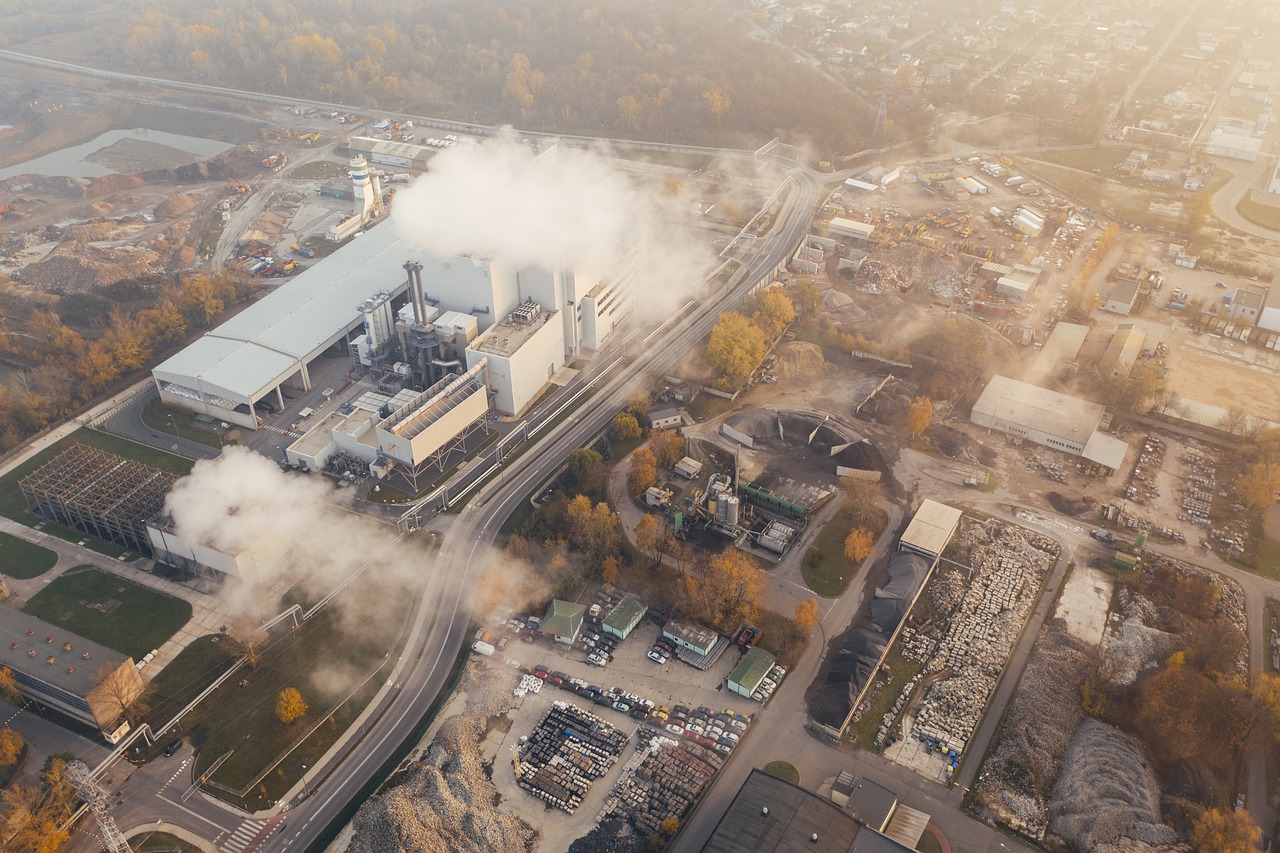How Can Smart Infrastructure Reduce Carbon Footprints in Cities?

As we stride into the future, the concept of smart infrastructure has become a focal point in the quest for sustainable urban development. Smart infrastructure integrates technology and data-driven solutions to improve the efficiency and sustainability of cities. A significant benefit of such an overhaul is the potential to reduce carbon footprints, which has significant implications for climate change mitigation worldwide. This article explores how smart infrastructure can help cities reduce carbon emissions through various avenues such as sustainable energy use, efficient transportation, sustainable construction, and effective policy management.
Smart Energy Management in Cities
Urbanization, with all its benefits, brings with it higher energy consumption, leading to increased greenhouse gas emissions. However, smart infrastructure can turn this around, paving the way for smart energy management in cities.
This might interest you : Discover the best mystery boxes in italy for unique surprises
Smart energy management leverages technology and digitalization to monitor, control, and optimize energy use within a city. It involves the use of smart grids, renewable energy sources, and energy-efficient buildings. With smart grids, the city can better manage energy distribution, reducing energy waste and thus reducing carbon emissions.
Renewable energy sources such as wind and solar power, on the other hand, provide a means to reduce reliance on fossil fuels, which are a significant contributor to carbon emissions. Smart infrastructure aids in the seamless integration of these renewable energy sources into the city’s energy grid.
Also to discover : What’s the Effect of 5G on IoT Device Responsiveness and Reliability?
Moreover, smart buildings use technology to regulate energy use effectively. These buildings are equipped with sensors and intelligent systems that can control lighting, heating, and cooling based on occupancy and usage, thereby minimizing energy waste.
Efficient Transportation and Reduced Emissions
Transportation is another significant contributor to a city’s carbon footprint. However, with smart infrastructure, cities can transform their transportation networks to become more efficient and less carbon-intensive.
Smart transportation systems make use of data, AI, and other digital tools to optimize the use of transport infrastructure. This includes implementing intelligent traffic management systems to mitigate traffic congestion and reduce idling times for vehicles, which can significantly cut down carbon emissions.
Moreover, smart infrastructure enables the deployment and integration of sustainable transportation options, such as electric vehicles (EVs), into the transportation network. Charging infrastructure for EVs, for example, can be incorporated into the city’s smart grid, facilitating the wider adoption of these zero-emission vehicles.
Public transportation can also be optimized through smart infrastructure. Real-time data can be used to improve the efficiency of bus and train schedules, reducing the need for individual car use and thereby reducing carbon emissions.
Sustainable Construction and Urban Development
Urban development often involves construction activities, which contribute significantly to carbon emissions due to the heavy machinery used and the materials involved. However, implementing smart infrastructure can lead to more sustainable construction practices and overall urban development.
Smart construction involves the use of technology and data to improve the efficiency and sustainability of construction projects. This includes using Building Information Modeling (BIM) software to plan and design buildings more efficiently, reducing waste and emissions from construction activities.
Moreover, smart construction can also involve the use of sustainable materials that have lower carbon footprints. For instance, the use of recycled or renewable materials in construction can significantly reduce the amount of carbon emitted during the construction process.
Smart infrastructure also opens the door to the concept of smart urban planning. This involves using data and digital tools to design cities in a way that reduces the need for energy and resource-intensive activities, thereby reducing the city’s overall carbon footprint.
Policy Management for Climate Change Mitigation
Effective policy management is a crucial aspect of reducing carbon footprints in cities. Smart infrastructure provides the tools and data necessary for policymakers to make informed decisions regarding environmental sustainability.
With smart infrastructure, cities can collect and analyze data on various aspects of urban life, including energy use, transportation, and waste management. This data can then be used to identify areas where carbon emissions can be reduced and to track the effectiveness of policies aimed at reducing these emissions.
Furthermore, smart infrastructure can aid in the enforcement of environmental policies. For instance, smart meters can be used to monitor and control energy use in buildings, ensuring compliance with energy efficiency standards. Similarly, intelligent transportation systems can be used to enforce policies aimed at reducing vehicle emissions, such as congestion charges or low emission zones.
In summary, smart infrastructure provides a host of opportunities for cities to reduce their carbon footprints. By embracing this approach, cities worldwide can move towards a more sustainable future, tackling climate change head-on. Through smart energy management, efficient transportation, sustainable construction, and effective policy management, cities can significantly cut down their carbon emissions while improving the quality of life for their residents. As we confront the urgent reality of climate change, the adoption of smart infrastructure is not just an option but a necessity.
The Role of Data in Shaping Low Carbon Cities
The fusion of technology and urban life has led to the birth of smart cities. Central to the operations of a smart city is the generation and utilization of data. Data, when accurately gathered and analyzed, offers a wealth of information about a city’s carbon emission trends and potential areas for emission reduction.
In the context of climate change, cities can leverage data to map out carbon hotspots, areas with significantly high carbon dioxide emissions. With this information, city planners and policymakers can devise targeted strategies to reduce emissions in these specific areas. This could involve incentivizing the switch to renewable energy sources or implementing stricter building efficiency standards.
Data also plays a crucial role in the monitoring and enforcement of carbon reduction initiatives. Through sensors and other data collection devices, cities can keep track of their greenhouse gas emissions in real-time. This allows for timely interventions when emission levels exceed the desired limits. Similarly, data can be used to monitor compliance with emission reduction policies and regulations.
Moreover, data-driven insights can inform urban planning decisions to create low carbon cities. This could involve designing cities to minimize car dependence, thereby reducing gas emissions, or planning urban green spaces to absorb carbon dioxide.
The Future of Smart Cities and Carbon Emission Reduction
As we stand on the brink of a new era of urbanization, the potential of smart cities to bring about a significant reduction in carbon emissions is immense. The integration of technology and data-driven solutions in urban infrastructure offers a promising pathway towards achieving net carbon cities.
In the battle against climate change, the role of renewable energy cannot be overstated. Smart cities provide the ideal platform to facilitate the large-scale adoption of renewable energy. Through smart grids, cities can seamlessly integrate solar, wind, and other forms of renewable energy into their energy mix, reducing their reliance on fossil fuels and consequently, their greenhouse gas emissions.
From an urban planning perspective, smart cities present an opportunity to rethink how we design and manage our urban spaces. Through data-driven urban planning, we can design cities that are not only energy-efficient but also conducive to low carbon lifestyles.
Finally, the ability of smart cities to gather and utilize data is a game-changer in policy management. Policymakers can leverage data to formulate, implement, and monitor policies aimed at reducing carbon emissions. The transparency and accountability afforded by this data-driven approach can boost public trust and participation in climate action initiatives.
In conclusion, smart infrastructure holds the key to reducing carbon footprints in cities. By harnessing the power of technology and data, cities can become more energy-efficient, reduce their greenhouse gas emissions, and move towards a more sustainable future. The journey towards a low carbon future is challenging, but with smart infrastructure, it is certainly within our reach. As we continue to grapple with the realities of climate change, the adoption of smart infrastructure is not just a preference but a pressing necessity. The future of our planet depends on the choices we make today, and the smart city concept offers a viable roadmap towards a sustainable future.
